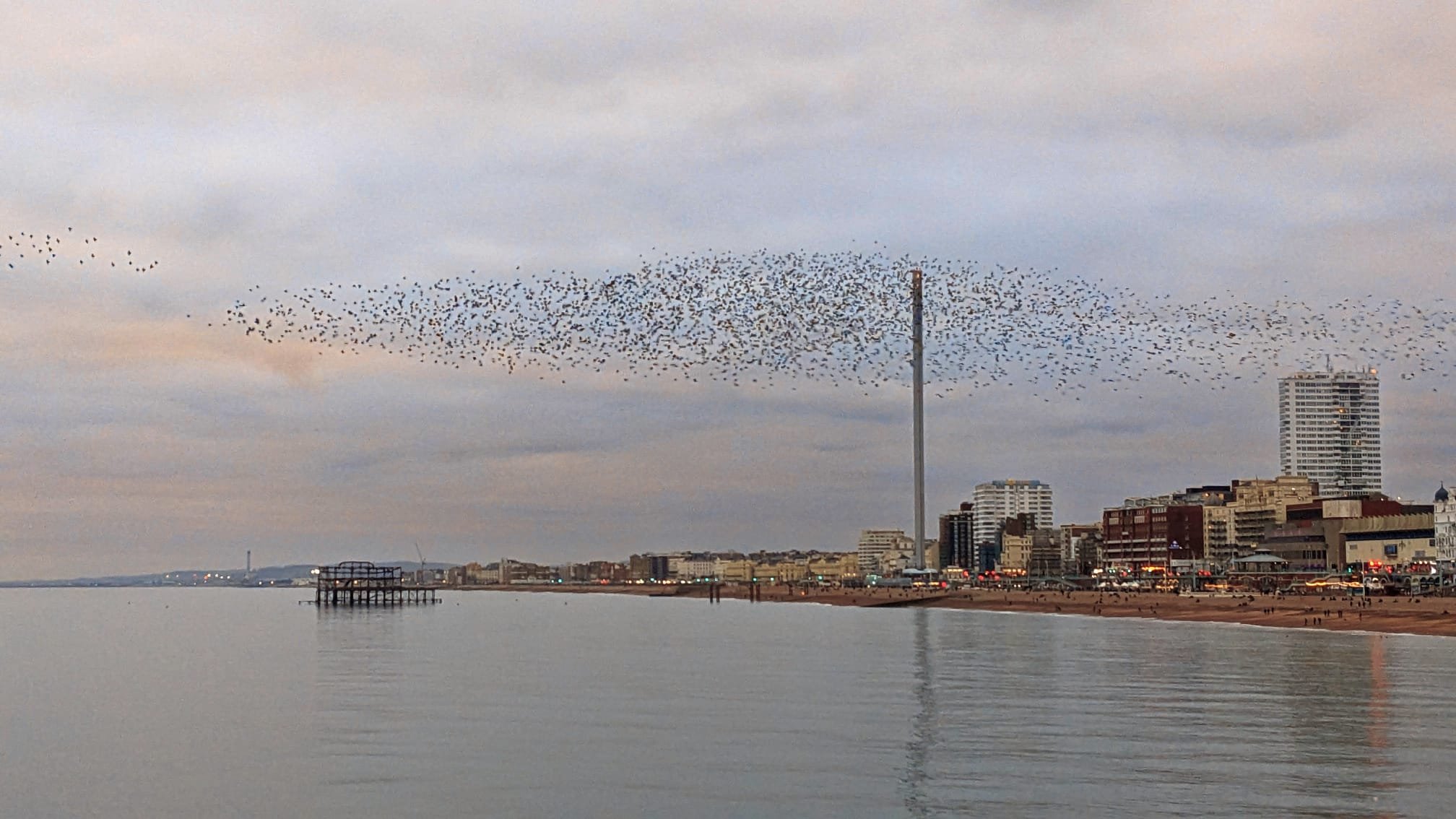Fascinating facts about Starling Murmuration
Have you ever seen flocks of starlings sweep in the skies creating waves and patterns? It is a sight to behold and has fired the interests of both groups- artists and scientists for ages. These swarming sweeps of starlings are called ‘murmurations’ where hundreds and thousands of birds fly at once. Is it synchronized? Researchers think maybe. So, how do individual starlings indulge in this captivating demonstrations? Here we write about the science behind this beautiful phenomenon and discuss some new findings.
“We call them murmurations, but the Danish term, sort sol, is better: the black sun. It captures their almost celestial strangeness.” – Helen Macdonald, Vesper Flights
Many species engage in collective behaviors, for protection, cooperation, and reproduction. This allows them to achieve goals that individuals would find impossible to achieve alone. In the case of starlings, grouping together does offer safety in numbers from their common predators such as peregrine falcons and hawks. However, what marvels most observers is the period of its occurrence which is only during the winter months just at the onset of dusk. Biologists state the other significant reason for murmuration is to communicate and gather individuals to a warm roosting site. Therefore, starlings perform these wheeling stunts near their roosting sites (where birds settle for the night), to exchange information and gather all their kins along.
Extensively observed in Northern Europe and the UK, there are many unknowns about starling murmuration. For instance, how do they maintain cohesion and coherence when individuals in the group are constantly subjected to uncertain behavior? Irene Giardina - Professor of Theoretical Physics at Sapienza University, who studies flock and swarm behaviors, points out two emergent factors- interactions between individuals and velocity of individuals- that define murmuration patterns.
Starlings (Sturnus vulgaris) flying around the Brighton pier [11.02.2023] Source: Team Experimentalist
To study how the number of interactions affects cohesiveness in the flock, her group computed how each neighbor contributes to robustness. Since each bird in the flock must respond to external signals, such as avoiding predators, seeking food, and roosting sites, in addition to remaining cohesive, their investment in group interactions must be minimal. Giardina and colleagues found that the least effective cost input to achieve maximum cohesiveness in the flock is by interacting with six to seven neighbors. Thus, each starling reacts to the six or seven birds nearest to it to achieve their coordinated movements (published in PLOS Computational Biology).
Starlings are also bestowed with an amazing lateral vision that helps them have a field view that extends all the way around their bodies. This helps them to regulate speed when flying in a flock, just like a car driver that has lateral and back mirrors. New research published in Nature Communications by Antonoi Culla, Irene Giardina, and colleagues throws light on how individuals within a flock regulate their speed. By using the statistical field theory approach, they explain that starling flocks employ a marginal speed control that adjusts the small deviations and suppresses large fluctuations. Just like how a driver controls speed by imitating the vehicles around them, each bird in the flock effortlessly can control against slight variation from the reference speed but moving much faster or slower can be challenging. The input for this study is the video database of starling flocks collected over 15 years. There are many other public databases (like Starlings in the UK) that provide additional information on sighting locations, time, and upload videos. They are also looking for public engagement for updating their databases and maps.
It is amazing how mathematical models answer some of the intriguing biological questions. There is a branch of Particle Physics that is now dedicated to studying the patterns in living and nonliving entities that give rise to collective behaviors. Huge amounts of data on bird flocks, ant colonies, and animal herds are being analyzed along with sand dunes, snowflakes, hurricanes, stock markets, and even the internet to find correlations in these dynamic, nonlinear systems. Most often it is the response and feedback that maintains these collectives.
This is our first article for the Curiosity series and is part of our Community section. We like to know your feedback and suggestions on what you will like us to cover next.

